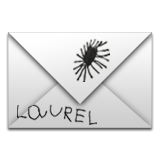Good evening,
Welcome to my newsletter. 🎐
Sorry for the poorly formatted version before this! Trying again... :)
Anyway, tonight is February 15, 2020. It quite cold in New York City. I am here, typing in my bedroom, listening to an album, watching a candle glimmer through the reflection of my glass screen...
I thought it might be cool to tell you:

Lately I’ve been remembering some train stations in Japan. I was there this past summer.
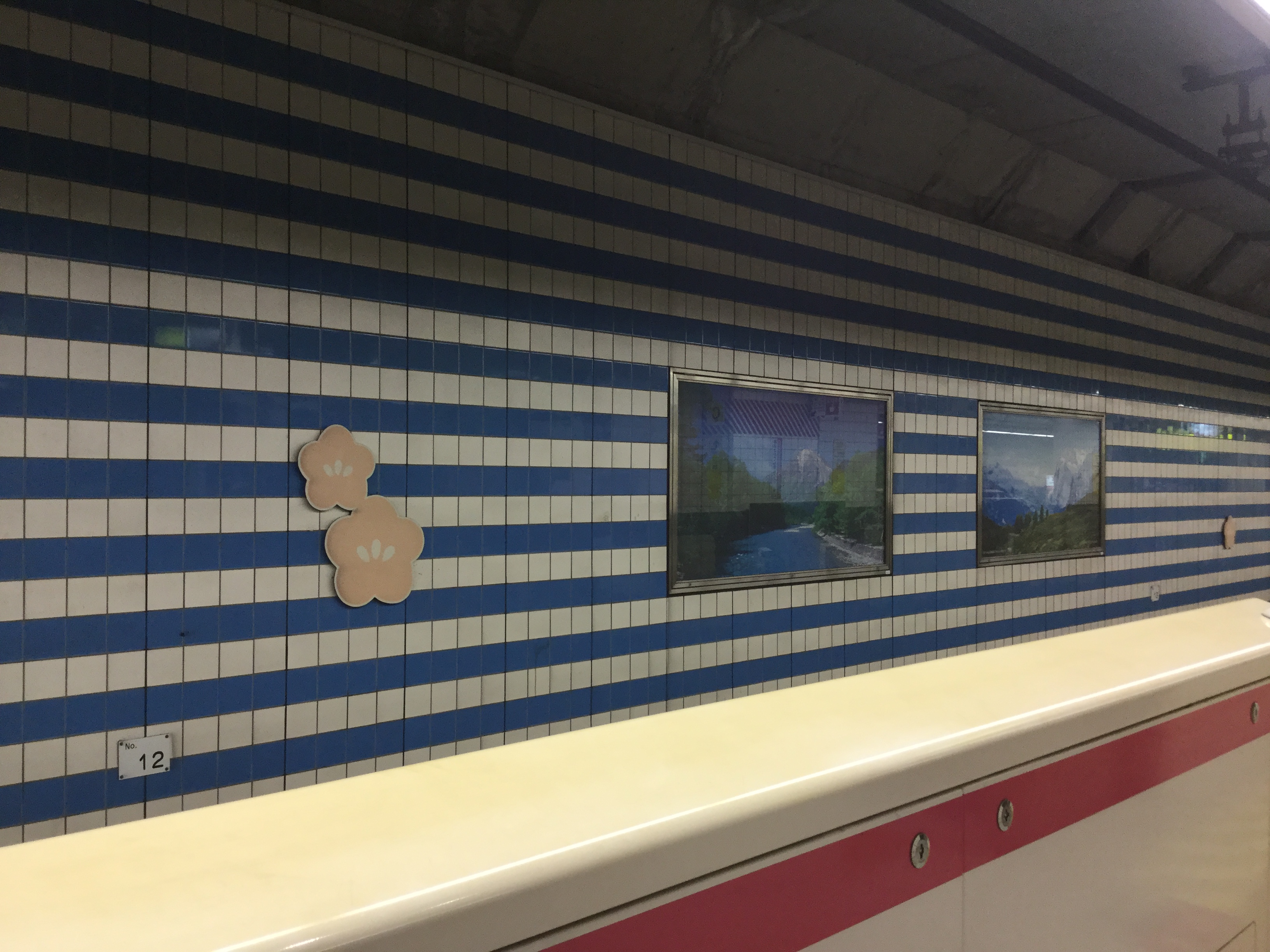
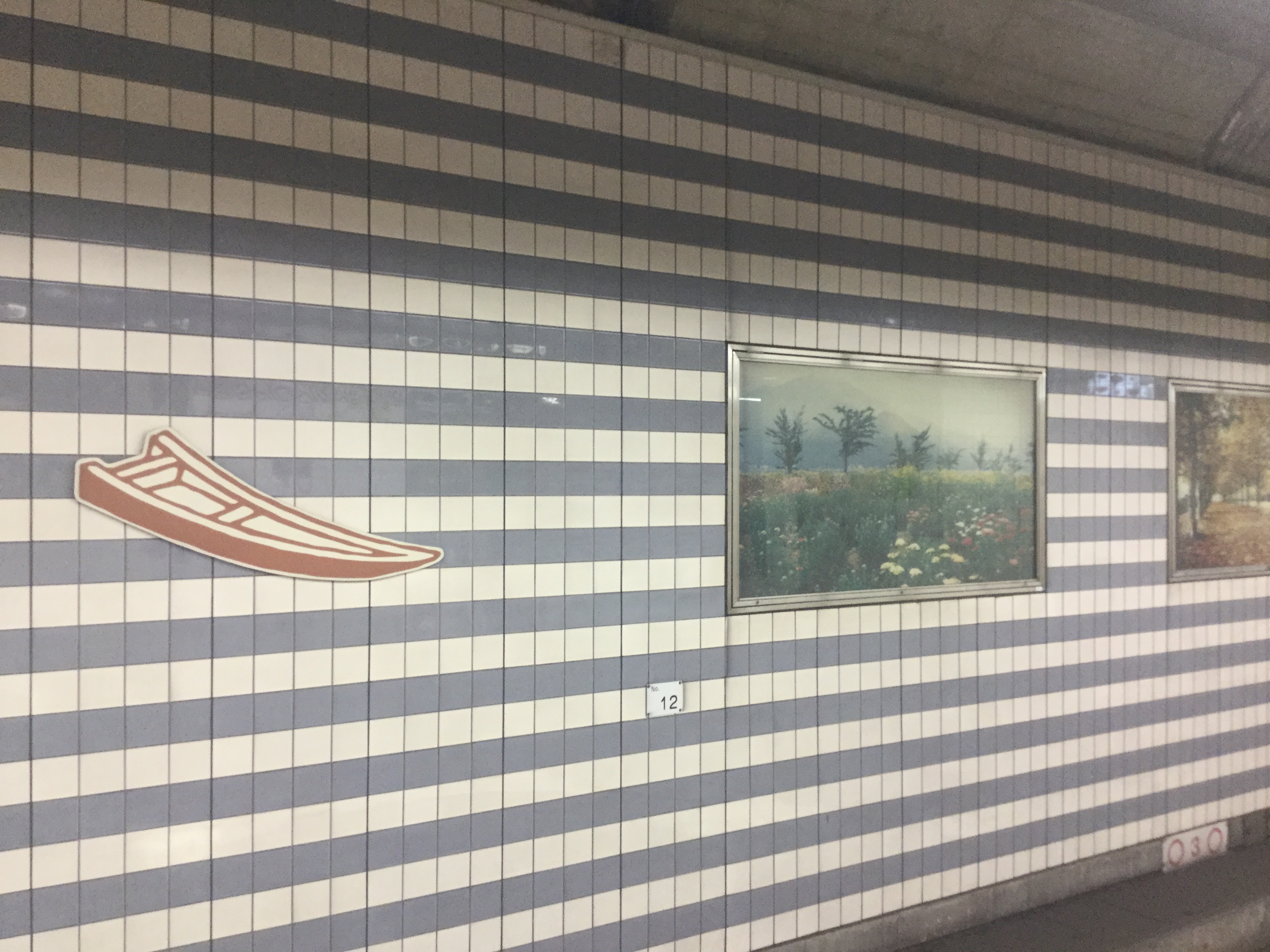
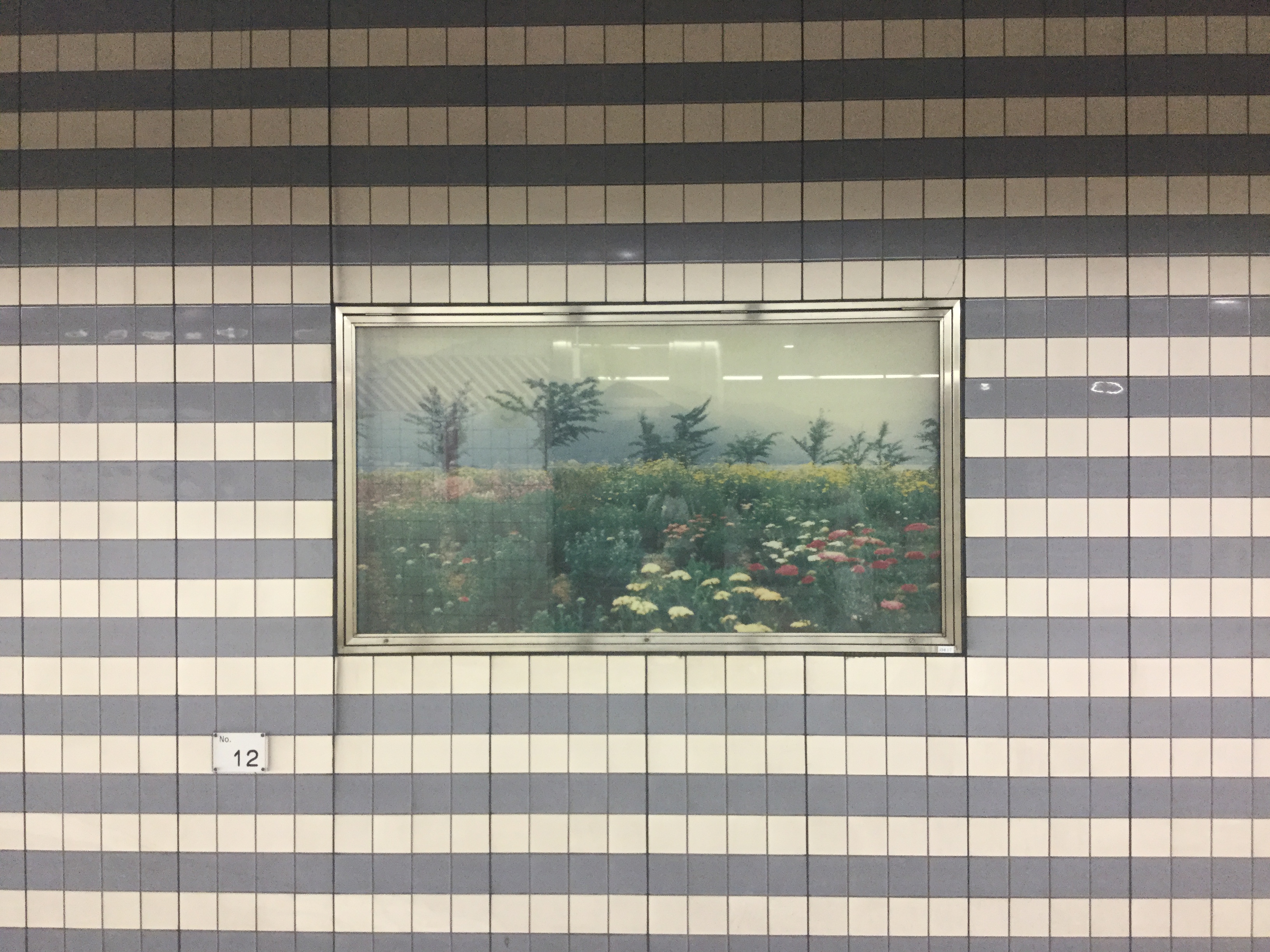
Each station has a different bold graphic symbol and a specific framed landscape photograph nearby…
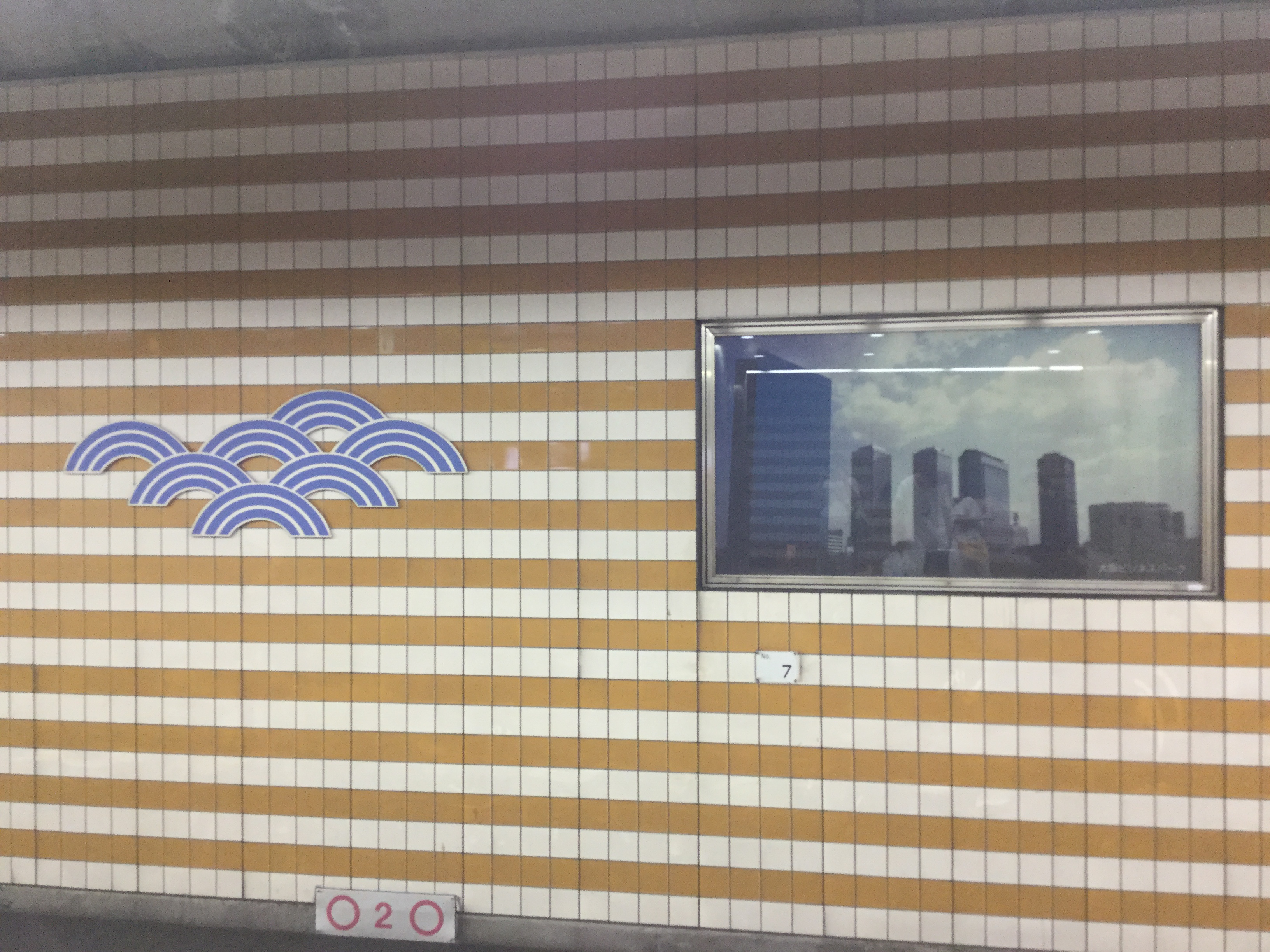
… and also a special color of striped tile.
Of course, it makes sense to have changing symbols inside train stations—it’s a common way-finding device. It’s important to get off at the right stop, and visual cues can help since by default all train stations could look the same.
But the way these elements worked together in Osaka wasn’t completely predictable… it differed from most way-finding systems in this way. There was still an element of mystery. Symbol, picture, and color didn’t seamlessly fit together. They were layered, like clues… encouraging exploration…
Last summer, I told a friend that I wanted to go more in the direction of making “work to hang out with.” But why? What’s the point?
What makes us want to hang out in an environment? I think we need a good balance of boring and mysterious. There could be some meaning, but not too much. Some things should be abstract, unresolved enough to encourage exploration and curiosity.
Internally, I categorized these special train stations in Japan as something I’ve been calling “sticky for memory” work… When used functionally, it’s often location-specific. It works through time itself…
Present
In the present moment, these visual cues enhance the feeling of being in a specific place ... In a train station, someone might say, "Wow this field of flowers is beautiful ... I wonder if there are special flowers outside nearby? Is it a specific place I can visit?"
Non-present
Maybe these cues help you recall a past moment. The sensorial details that went along with the train stations, for example, are ambient hooks for memory. Someone might say, “Remember when we were in that yellow station in the city center last week, I think it has a blue rainbow symbol?”
If these symbols were less abstract, they would be more full. There wouldn’t be a void for me to link my memories.
Anyway... I like to think of myself sometimes as working behind the scenes in a subtle, nuanced way, helping choose the memorable aesthetic details that will truly flourish in the minds of my audiences, making their present, past, and futures richer.
There are fun and mystifying decisions to make, like “What's more sticky-for-memory for this place... a cow or a cloud?” Deciding likely depends on the place (which symbol is a better icebreaker to talk about a place—its history and characteristics) and which symbol is more memorable (enduring in the minds’ of visitors through time).
I also wonder about short- and long-term memory. Like with these train stations, someone made this system most likely for short-term memory. So you can remember where you were... i.e. Maybe you see the pink sparkle of the plum blossom symbol out the window and realize “I am home!”
But I like thinking about working for longer-term memory as well... maybe it’s not as pragmatic or systematized. Prioritizing for long-term memory seems more nuanced and sensory (utilizing all five senses and more) that you may only notice through repeat visits. Like the width of a platform, the quality of the light, a special melody (like the Tokyo train jingles), or even a specific custom smell.

This is my Pomera DM30.
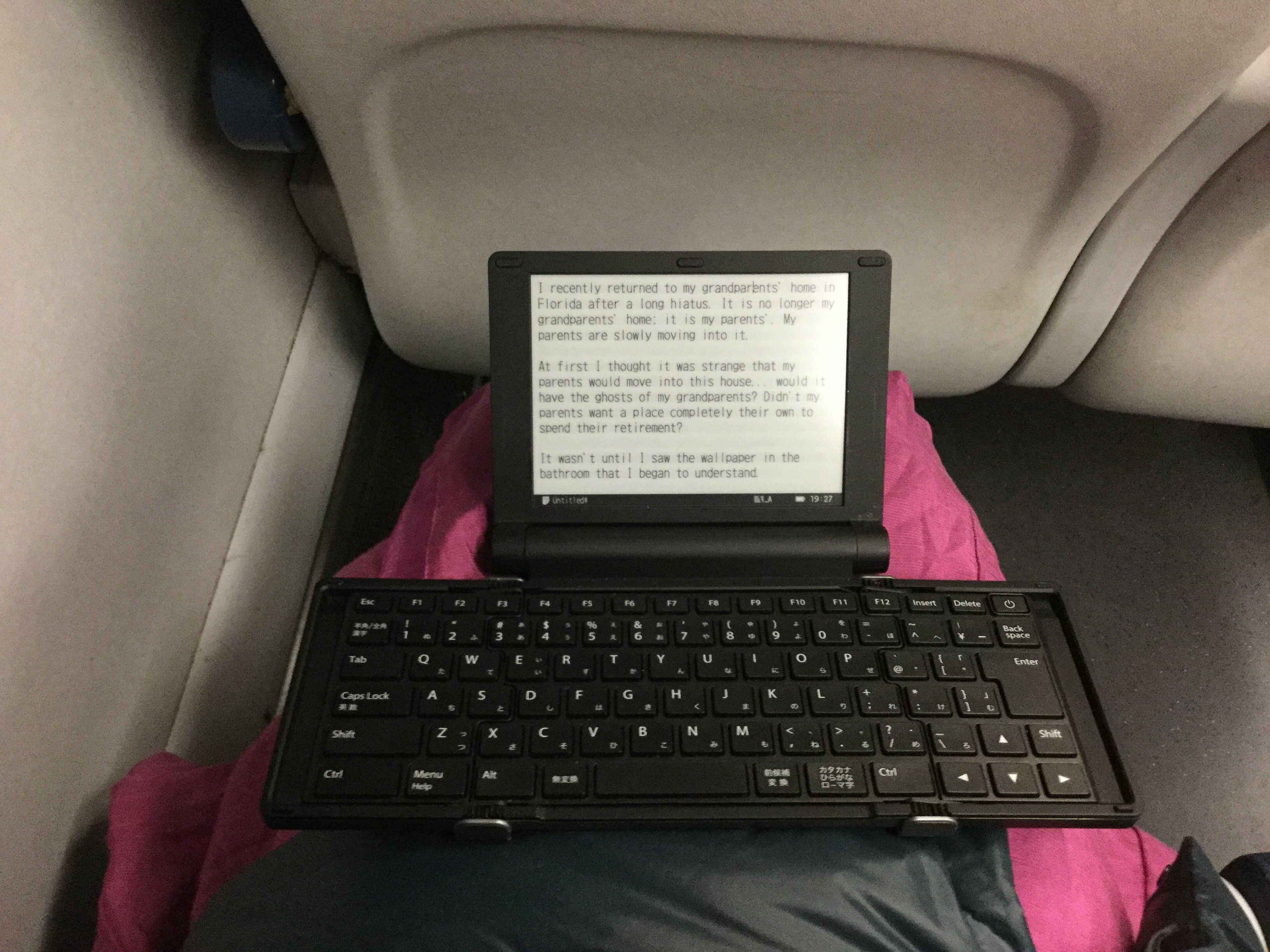
It is a typewriter that saves
.txt files to an SD card. This model has an e-ink display, making for easy typing outdoors. I bought it this past summer in Japan... but I started researching it months before.
I remember saying to myself...
“I want to write in a way… in which I don’t know exactly what I’ll write before I write.”
I am not saying this device is the only solution, the only way to enter this state. But as you can see, I am interested in environments (re: train stations), and how the affordances of those environments affect us, so of course I am interested in changing my writing environment to encourage this state.
I aspire to write these “reflections” that this newsletter contains with this attitude. I’d like to start with something I’m curious about, and then I want to write merely to know what I think... to unpack the curiosity, if you catch my drift. But of course I don’t want to kill the curiosity through explanation. I want my writing to help continue it.

I wanted to end by saying...
Thank you for coming along for this newsletter experiment ride with me! :)
This is my inaugural letter. And I am planning on sending this newsletter about every other week this year.
I also decided to set up my own email list signup, which is similarly experimental. I couldn’t find any email service that didn’t seem overly commercial, and I really wanted to maintain that feeling of an email from your friend, so here we are.
If at any time you’d like to unsubscribe, or subscribe again, you can do so at http://email.laurel.world.
The username is
writer and the password is
thoughts_become_things.
If you go to that site, you can see I have another newsletter that is sent out less frequently, if that is more your style.
Of course, at any time, you can feel free to reply directly by clicking “reply” in your email client. I am curious to hear your reflections on my reflections.
I hope you have enjoyed this email, which has been approximately 1046 words in length.
See you on the other side...
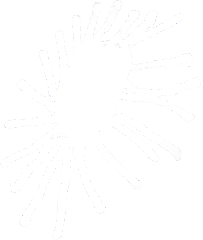
Goodnight,
Laurel
